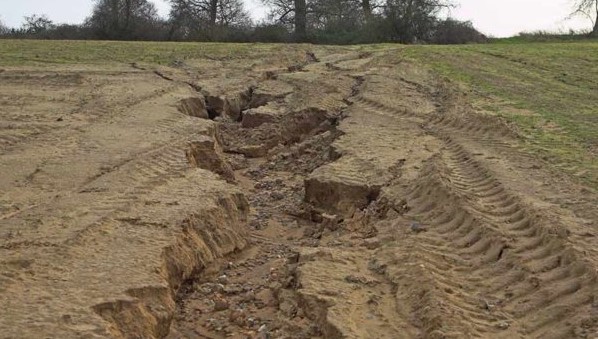Blog

How to Assess the Risk or Erosion Your Land Faces
The displacement of the upper layer of soil is commonly known as soil erosion. The process of soil erosion can take years and greatly decreases agricultural productivity. Soil erosion also leads to weaker support – this means thatthe land cannot support construction or other types of load.
Assessing the Risk of Erosion in Land
Experts assess the risk of erosion by considering common factors such as land conditions, environmental factors and human activity on the land. The consequences of erosion are extremely harmful – it can lead to the loss of nutrient rich top soil which is followed by ecological collapse and decreased agricultural productivity.
Monitoring and measuring soil quality are the primary techniques for assessing the chances of soil erosion. These can help identify the causes which contribute to soil erosion so that prevention projectscan be deployed to avoid soil erosion in the long run.
The Universal Soil Loss Equation
A majority of the erosion models for measurement and prevention are non-linear. The Universal Soil Loss Equation developed in the 1960s and 1970s helps estimate the annual soil loss to calculate risk and devise strategies for prevention. The equation is as follows:
A = RKLSCP
Where R is the rainfall erosive factor, K is the soil erodibility factor and L and S are topographic factorsrepresenting length and slope. C is the cover and management factor and P is the support practices factor.
This equation has been useful for measuring the risk of erosion in larger lands such as plains and even continents.
Water Erosion Prediction Project Model
The Water Erosion Prediction Project Model is widely used in the United Kingdom and United States. The model uses four key elements: soil, topography, climate and land management techniques to assess the risk of erosion. It uses fundamental plant science, hydraulics, hydrology and erosion mechanics to determine the risk and devise strategies for prevention. This model was developed in 1995 and is used in various industries such as coal mining, fishery, forestry, rangeland, cropland, etc.
Rangeland Hydrology and Erosion Model
Rangeland Hydrology and Erosion Model is based on plant science, infiltration, hydrology, erosion mechanics and hydraulics.
Prevention of Soil Erosion
Soil erosion can be prevented with the help of expert guidance. You need an appropriate plan based on the requirements of your land.
Once your land has been assessed, experts can help you mitigate the risk using different types of erosion solutions. Soil erosion prevention and treatment is done at both the individual level and global level. At the global level, the aim is to maximise vegetative cover on the land to reduce erosion. Various old techniques are still used to minimise erosion and prevent it in the long run. Windbreaks are one of the most common techniques.
Another technique is terracing. In agricultural language, a terrace is a sloped piece of land that has been cut into a series of smaller platformsresembling the steps of a staircase. Terracing is more common in the paddy fields.
Hydraulic Works
The aforementioned techniques are used to prevent erosion. However, what can do if the land is already eroded?
Ecological loss or collapse occurs when the ecosystem can no longer carry the organisms, thereby resulting in mass extinction. Some hydraulic procedures may pollute watercourses and lead to the loss of habitat.
Hydraulic works include rebuilding and redesigning the hydraulic supply system to minimise pressure and distribute waterequally within the soil. This includes specific techniques for preventing erosion. Hydraulic interventions require estimation of the erosion risk along with monitoring and assessing the condition of land. You need an expert’s guidance to assess the erosion risk and devise plans for mitigating the risk. If you want to know more about hydraulic works, you can read about their application here: https://www.maccaferri.com/us/applications/hydraulic-works/
Solutions such as hydraulic works can help you achieve waterflow and healthy distribution of soil nutrients. Hence, hydraulic works can eradicate the need for alternative treatments such as windbreaks.



Comments